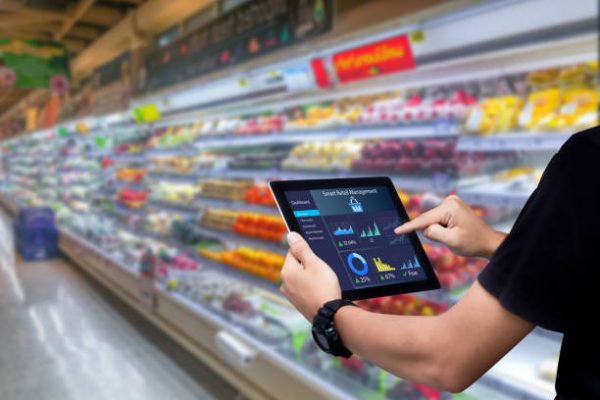
- June 11 2025
- SFI Solution Team
Transforming Procurement With Supplier Portal Integrations
In the current fast-paced and digitally-oriented business environment, achieving procurement efficiency has shifted from being a luxury to an essential requirement. For procurement leaders aiming to optimize operations, cut costs, and establish robust supply chains, integrating supplier portals presents a game-changing solution.
This blog delves into the ways in which the integration of supplier portals into your procurement framework can transform sourcing, enhance supplier relationships, and positively impact your bottom line.
What Is a Supplier Portal?
A supplier portal is a secure online platform that enables businesses to collaborate and transact with their suppliers in real-time. It provides a centralized location for suppliers to :
-
Submit invoices and quotations
-
Track purchase orders and payments
-
Manage compliance documents
-
Communicate with buyers
When integrated with ERP, procurement, and finance systems, a supplier portal becomes a powerful tool for automation, transparency, and operational agility.
Why Procurement Needs Supplier Portal Integration
1. Enhanced Supplier Collaboration
Supplier portal integrations break down communication silos, enabling real-time information sharing and faster decision-making. Suppliers can access order updates, payment statuses, and documentation in one place—reducing back-and-forth emails and phone calls.
2. Improved Procurement Efficiency
Manual procurement processes are slow, error-prone, and labor-intensive. Integrated supplier portals automate :
-
Purchase order management
-
Invoice processing
-
Document verification
This not only reduces processing time but also minimizes human errors, freeing up teams for strategic tasks.
3. Real-Time Data Visibility
With real-time dashboards and analytics, procurement teams gain actionable insights into supplier performance, compliance status, and spend analytics. This visibility enables better forecasting, risk mitigation, and data-driven decision-making.
4. Stronger Compliance and Risk Management
Integrated portals enforce supplier compliance by ensuring mandatory certifications and regulatory documents are submitted and up to date. Alerts and automated workflows help monitor risks and ensure adherence to procurement policies.
5. Cost Savings and Scalability
By digitizing the procurement process, businesses reduce operational costs, eliminate paper-based workflows, and streamline approval cycles. Plus, integrations make it easier to scale supplier networks without proportionally increasing administrative overhead.
Key Features of an Integrated Supplier Portal
To fully reap the benefits, your supplier portal integration should include the following features :
-
Seamless ERP integration (e.g., SAP, Oracle, NetSuite)
-
Automated invoice and PO matching
-
Document and contract management
-
Supplier onboarding workflows
-
Self-service dashboards for suppliers
-
Multi-language and multi-currency support
-
AI-driven spend analysis and reporting
Use Case : Supplier Portal Integration in Action
Consider a global manufacturing company struggling with delayed shipments and invoicing discrepancies. After integrating a supplier portal with their SAP ERP, they achieved :
-
70% faster PO processing
-
40% reduction in invoice disputes
-
Increased on-time delivery by 25%
-
Improved supplier satisfaction scores
This transformation was driven by better data accuracy, automated processes, and enhanced supplier engagement.
Best Practices for Successful Supplier Portal Integration
-
Align Stakeholders Early : Involve procurement, IT, finance, and suppliers from the beginning.
-
Prioritize Integration Capabilities : Ensure your supplier portal can seamlessly connect with existing systems.
-
Focus on User Experience : Make the portal intuitive for suppliers to encourage adoption.
-
Invest in Training and Support : Provide resources to guide both internal teams and suppliers.
-
Continuously Monitor and Optimize : Use analytics to refine processes and improve ROI.
Future Trends : AI and Blockchain in Supplier Portals
Supplier portals are evolving beyond basic automation. Emerging technologies are reshaping the landscape :
-
AI and Machine Learning enable predictive analytics and risk scoring.
-
Blockchain ensures transparent, tamper-proof transactions.
-
IoT Integration connects logistics data with procurement workflows.
-
Mobile-first portals enhance accessibility and responsiveness.
Early adopters of these innovations will gain a competitive edge in procurement agility and resilience.
Conclusion
Supplier portal integrations are not just a tech upgrade—they are a strategic imperative. By connecting suppliers more directly and intelligently into your procurement systems, you unlock efficiency, agility, and insight that can power growth and resilience.
Whether you’re a mid-sized enterprise or a global organization, investing in supplier portal integration is a step toward a smarter, more connected, and more competitive procurement function.
Ready to Transform Your Procurement Process?
Explore how our supplier portal solutions can seamlessly integrate with your ERP and procurement stack to streamline operations and drive value across your supply chain.
Contact us today at +1 (917) 900-1461 or +44 (330) 043-1353 to schedule a free demo or consultation.
Previous Post